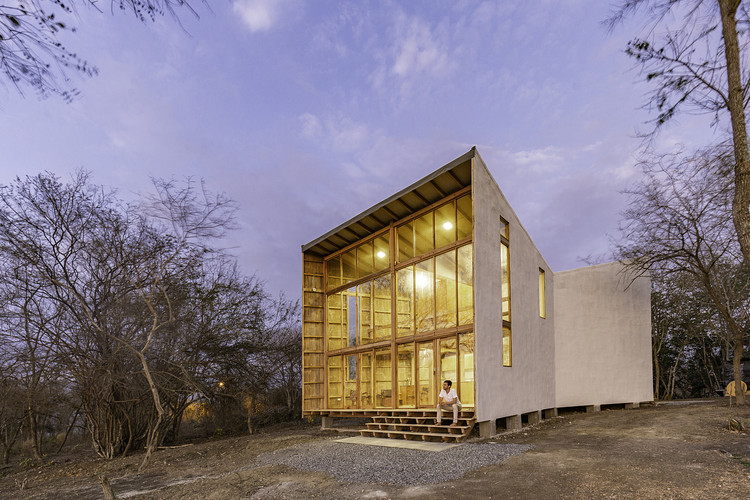Edge Condition Pavilion Synecdoche Design Studio
2011-06-16 00:00
架构师提供的文本描述。利用副产品材料作为调用临时展馆的一种手段,这种临时材料是从硬木板上切割出的临时材料木边,它提供了一个标准化的对象,可以在创建一个可以居住的领域的基础上建立起来。在既非板材又非木屑的确定性材料边缘上操作,使木材边缘成为两个阶段之间的时间对象。
Text description provided by the architects. Utilizing a by-product material as a means of invoking the temporary pavilion with a temporary material wood edges cut from hardwood boards give a standardized object to build upon creating a field in which to inhabit. By operating on the edge of definitive material, neither board nor wood chip, the wood edge becomes the temporal object between two phases.
在同样的光线下,展馆为建筑提供了一种边缘条件。堆放和操纵边缘的方法模式本身就在一种构造模式的边缘上。扁平堆垛方法让位于材料之间体积的膨胀和收缩的机会。叠加技术的变化使得光只能通过边缘之间的空间进入展馆,将边缘条件转化为一种短暂的效果。
In the same light the pavilion offers the capacity to be an edge condition of construction. The methodical mode of stacking and maneuvering the edges is in itself on the edge of a mode of construction. The flat stacking method gives way to opportunities for expansion and contraction of the volume between the material. The variable of stacking techniques allow for light to move into the pavilion only through the spaces between the edges transforming the edge condition into an ephemeral effect.
标准的1英寸厚的硬木边缘和重量将堆叠压缩成一个适合居住的巢穴,由其尺寸和装配来稳定。虽然DIS-装配是反向操作,但材料的处置是将木材边缘返回到硬木轧机,以便重新进入本来会发生的回收过程。
The standardized one inch thick wood edge and weight of the hardwood compress the stack into a inhabitable nest stabilized by its dimension and assembly. While dis-assembly is the reverse operation, the disposal of the material is a process of returning the wood edges to the hardwood mill as to reenter the recycling process that would otherwise take place.
 举报
举报
别默默的看了,快登录帮我评论一下吧!:)
注册
登录
更多评论
相关文章
-

描边风设计中,最容易犯的8种问题分析
2018年走过了四分之一,LOGO设计趋势也清晰了LOGO设计
-

描边风设计中,最容易犯的8种问题分析
2018年走过了四分之一,LOGO设计趋势也清晰了LOGO设计
-

描边风设计中,最容易犯的8种问题分析
2018年走过了四分之一,LOGO设计趋势也清晰了LOGO设计




































































